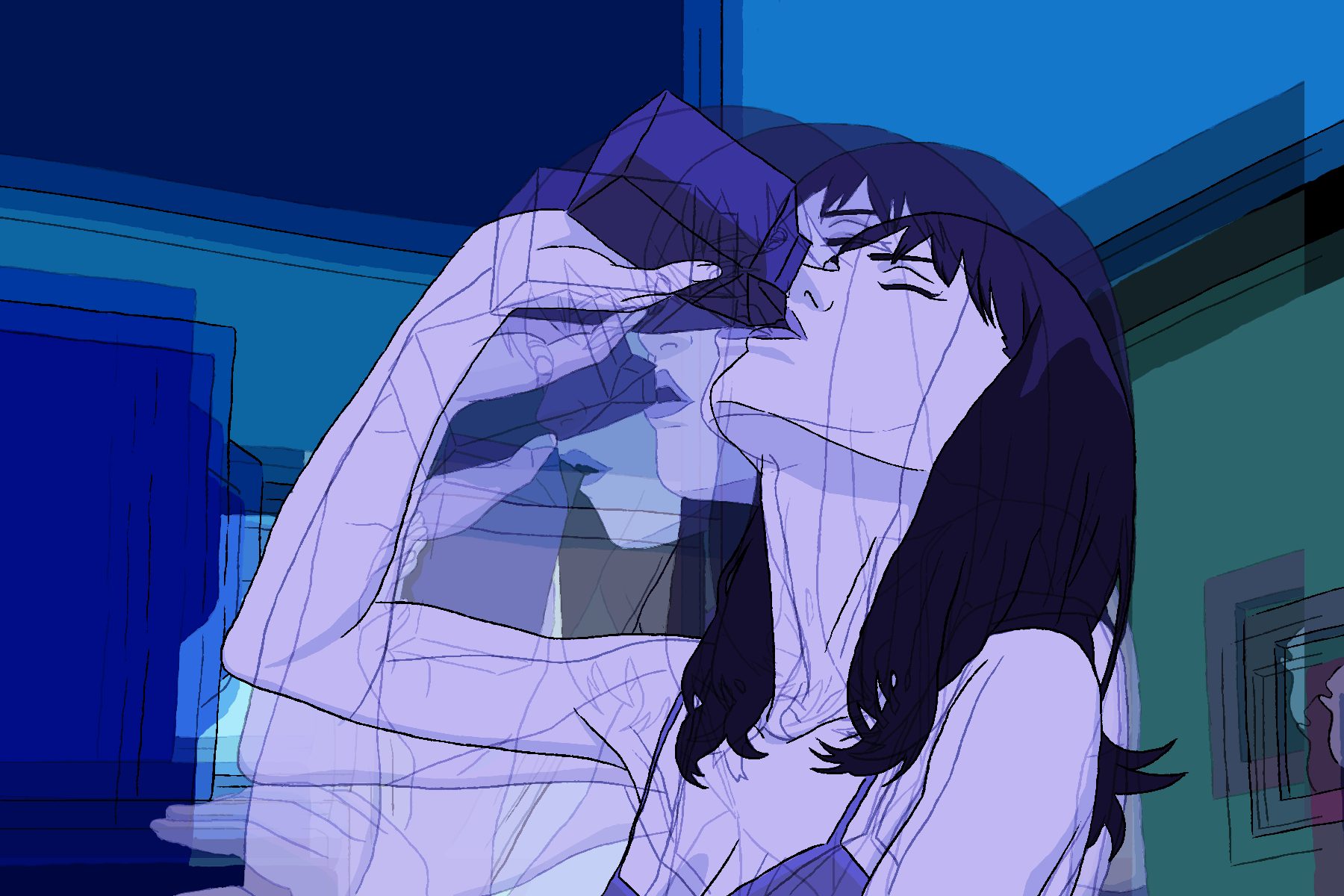When thinking of animated films, there is typically the connotation of child audiences. One immediately conjures up images of bright colors, larger-than-life characters, and whimsical stories, all tailored to suit younger viewers — but that is not always the case. Japanese director Satoshi Kon is widely celebrated as one of the most masterful filmmakers, revered for his work in highlighting animation as a limitless genre.
Satoshi Kon’s venture into filmmaking began in 1991 when his story “World Apartment Horror” was adapted into a feature-length live-action film. After “World Apartment Horror,” Kon delved into the world of animated films. With his strong artistic vision, Kon would go on to become one of several directors who paved the way for animated films to be taken seriously in the prestigious world of film and defied traditional conventions of animation through his unique directorial signatures. From his breakout 1999 film, “Perfect Blue,” to his highly influential “Paprika,” Kon’s unique storytelling has made him one of the most internationally celebrated directors in film. Woven through all of Kon’s work is his brilliant symbolism, vision and ability to capture what it truly means to be human.
The Perfect Reds in “Perfect Blue”
One of the most striking components of Kon’s work is his ability to seamlessly integrate and explore symbolism. Whether it’s his color grading, plot elements or soundtracks, Kon’s work brilliantly uses symbols to let his stories speak for themselves before characters have even begun to talk.
Kon’s directorial debut, “Perfect Blue,” follows Mima, a pop idol who wants to break away from her innocent roots as a girl group idol, and explore the more mature realm of acting. During this transformation, Mima lands a role in an upcoming murder mystery film titled “Double Blind.” As the filming goes on and her sense of identity is challenged, Mima begins to experience stress that renders her unable to distinguish between reality and disturbing delusions.
“Perfect Blue” is a masterful combination of character study, writing and design, but what truly shines in the film is Kon’s use of symbolism. While the color theory was already present in the film world, “Perfect Blue” is one of the first animated films to challenge traditional color motifs. In typical film color theory, red usually signifies peril or impending doom, but Kon used color as a way to signify a change in the world of the film. Through all of the moments leading up to the most harrowing scene in “Perfect Blue,” the color red grows more present and vivid. The intense hues of red evoke a sense of unease as they’re juxtaposed by the film’s neutral color palette, and this disconnect further intensifies the collision of protagonist Mima’s reality and her delusions.
The Vision of “Millennium Actress”
Opposite of smash hit “Perfect Blue’’ is “Millenium Actress,” a sweet ode to Kon’s beloved world of film. Like “Perfect Blue”, “Millenium Actress” grapples with the same themes of advancing technology and the relationship between celebrity and fan, but from the other side of the coin. Instead of being a haunting tale of obsession and fear, “Millenium Actress” is Kon’s love letter to cinema’s past and present.
The film follows a documentarian as he sets out to tell the story of a retired actress whose former studio is in the process of being demolished. As he learns more about her life and lost love, the real world and memory converge. As the faded movie star walks through decades of Japanese cinema, viewers get a palpable sense of Kon’s love for his craft. “Millennium Actress” is the perfect foil for “Perfect Blue” as it captures Kon’s hopeful message for the future of media as a whole.
“Millennium Actress” is widely interpreted as a movie meant to inspire young animators to see the vast plane of film and set out to mark their place in it. Like all of Kon’s works, it’s an absolutely breathtaking work of art that blends aesthetic appeal with an equally beautiful fantasy storyline. Beyond the bright colors and fantasy, Kon writes characters that are meant to stand the test of time — characters that we see ourselves in.
The Humanity in “Paprika”
Kon’s films bear a unique sense of timelessness that allows them to age effortlessly. Something that lends a hand in the impact of Kon’s work is his unprecedented ability to capture the nuances of humanity. Despite the fact that his filmography consists of animated stories that concern the boundaries between reality and illusion, all of the characters and intricacies are unflinchingly human. Especially his final film, “Paprika.”
“Paprika” is an epic clash of reality, cyberspace and fantasy. It’s easily regarded as one of Kon’s most eccentric works, which walks the line between science fiction and surrealism. Elaborate, winding dream sequences are scattered throughout the film and it is punctuated by one of Kon’s brightest color schemes.
Contrasting the whimsical nature of the film is the protagonist’s struggle to find a sense of self. This internal struggle is something that many viewers can connect to, and this sense of relatability is what makes “Paprika” resonate with audiences of all ages and backgrounds. Despite his works dealing with fantasy or illusions, all of his characters face conflict that deals with human emotions. His distinctive gift for telling human stories through unconventional plots is something that has left a lasting impression on both his viewers and colleagues.
Kon’s Lasting Legacy
With Kon’s work spanning decades, his films have influenced generations of filmmakers, particularly Darron Afronosky and Christopher Nolan. Darron Aronofsky is the mind behind 2001’s harrowing “Requiem for a Dream” and 2010’s haunting thriller “Black Swan.” In both of these films, Afronosky directly mirrors scenes from “Perfect Blue.”
In an article for AllTheAnime, Andrew Osmond writes, “Most contentiously, Perfect Blue is frequently linked with Darren Aronofsky’s ballet horror Black Swan (2010), where Natalie Portman plays a pressured dancer beset by delusions and doppelgangers. There’s a basis for the rumor. Aronofsky had bought the rights to Perfect Blue a decade earlier, but ended up merely cloning one scene for his 2000 Requiem for a Dream (here’s a side-by-side comparison).”
Similarly, “Paprika” appears to be a key influence on Christopher Nolan’s 2010 film, “Inception.” Both films feature protagonist detectives struggling to navigate the realms of the subconscious and very similar dream sequence scenes. It has never been explicitly clarified by Nolan, but there are definitely parallels between the two despite the films’ different genres. With both of these instances in mind, it becomes abundantly clear how iconic Kon’s work is to even the Western film industry.
For film buffs, Kon’s films have lived on to become a sort of litmus test. His work to create complex, human characters is reflected in the different individual interpretations of his work, reaffirming the viewer’s own complexity and humanity. Kon himself acknowledged his knack for making films meant to be rewatched and discussed, and strived to create films that leave viewers thinking — what has truly made him a gem in the film industry.
In a 2006 interview with Jon Pais for ScreenAnarchy, Kon stated, “Movies that you can watch once and understand entirely — that is the type of movie that I don’t really like. However, if you are able to understand 70 to 80 percent of what’s being relayed, and there’s still some percentage left that would allow for your own interpretation . . . that’s the type of movie that I do like. There might be a certain part that you don’t quite understand, but there is a portion that rests in your heart.”
A true testament to the salience of a work of art is the lasting impression it leaves on the world. Despite it being a decade since Kon’s tragic passing, his movies are still heralded as some of the most influential, groundbreaking works in film — both in Japan and internationally. Kon will live on as one of film’s greatest rulebreakers for his role in defying the conventional ideas of animation. His gift for intertwining human stories with incredibly detailed world-building and scores is a magical experience for both film buffs and casual viewers. Thirty years have passed since Kon’s first venture into the world of film, but his works persevere as catalysts for new approaches to animated storytelling — and will undoubtedly continue to do so for generations to come.
















